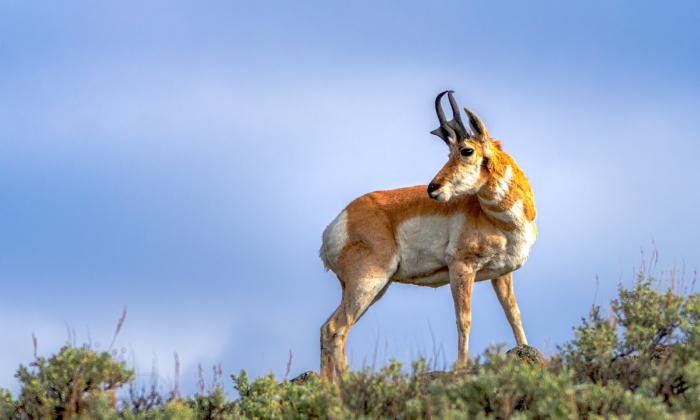It’s the land of those mysterious stone giants—that’s pretty much all that I knew about Easter Island.
That’s practically all that most of us know about it—vague impressions of the arcane that we have formed from the photographic images that we have seen of those gigantic strange stone statues known as “moai.”
It is a very different place from what I had expected.
“That’s a pretty scene—isn’t it? Those horses out in the field,” remarked my guide Yan Araki, as we headed toward a spot called Ahu Akivi.
We were driving down a narrow road lined with stone wall borders and looking out at some splendid horses grazing on green-yellow fields among rolling hills.
“Do you like Rapa Nui?” asked Yan. That’s what its Polynesian natives call this island that we call Easter Island. “Is it what you expected?”
I do like it—it greatly exceeded my expectations.
What I had expected was a very small, very remote, not particularly attractive island that happened to have these world-famous, colossal strange stone statues. I hadn’t imagined that it would be such an engaging and magically pleasant place.
“Well, it is small,” he said.
Approximately 64 square miles, it’s only about 14 miles long and at no point more than seven miles wide.
“And it is remote.”

The Most Remote Inhabited Island in the World
Easter Island is, in fact, the most remote inhabited island in the world. It sits in the South Pacific Ocean some 2,300 miles west of South America, 2,500 miles southeast of Tahiti, 4,300 miles south of Hawaii, and 3,700 miles north of Antarctica. The closest inhabited island is 1,260 miles away—tiny Pitcairn Island, the place where the mutineers of the H.M.S. Bounty settled.Easter Island, which has been part of Chile since 1852, may be remote, but it’s easy to get to from Chile and fairly easy even from other places as well via LATAM Airlines.
It’s not just the green-yellow fields with attractive horses and stone boundary makers that make Easter Island different from the typical South Seas island. There is no coral reef surrounding the island—unusual for a South Pacific island—and there are only two small white sand beaches.
A Lingering Sense of Solemnity and Mystery
But what makes Easter Island so special is not just what you see here—it’s also how you feel here.Walking slowly along while looking up at the row of seven colossal moai at Ahu Akivi, I felt an elusive sense of solemnity and mystery. It still lingers. It’s the same sort of feeling one gets while visiting the revered sites of Jerusalem or a special place of worship or one of the great wonders of the world.
One of the largest “ahu” on the island—an ahu is the platform on which the moai (stone statues) sit—Ahu Akivi is an especially sacred place, his favorite, Yan Araki told me. Folklore holds that its seven moai represent the seven young explorers that, according to a legend, the Polynesian King Hotu Matu’a dispatched from across the seas to find this new homeland for him and for his people.
These seven stone stature giants that I was looking up at may well symbolize those seven explorers, but no one knows for sure. Just as no one knows for certain what any of the moai really represent.
The generally accepted theory is that these majestic giant stone statues were built to honor Polynesian gods and deified ancestors such as chiefs and other figures important in the island’s history. Most of them are attributed to the 14th and 15th centuries, although some were erected as long ago as the 10th century.
Their function, it is believed, was to look out over a village or gravesite as a protector. They may also have been status symbols for villages or clans.
They’re gigantic. The seven before me at Ahu Akivi each stood about 16 feet high and weighed about 18 tons. The tallest moai on the island exceed 30 feet. Moai in the range of 12–20 feet are commonplace. The occasional tiny moai that you come across is at least six feet high.
The ahu of Easter Island vary in length—the longest one is 300 feet, while some that hold but one moai are only several few feet long. Each ahu has a stone masonry base that slopes upward to a high terrace upon which the moai rest. Some terraces are as high as 15 feet above ground level. All of them are fairly wide—the base of the moai that stand upon them measure as much as ten feet long by eight or nine feet wide.

How Did They Do It?
Understanding why the inhabitants of this tiny remote island built these mysterious giant stone statues is one thing—how is quite another.Sure, they had tools—but only very primitive tools.
Sure, the island’s volcanic rock from which they were carved is softer and lighter than most other rock, but even the smallest moai weighs several tons. Some of the moai of Easter Island have been estimated to weigh as much as 80 to 90 tons.
At no time was Easter Island ever inhabited by more than a few thousand people. Which raises this thought: It is one thing for a relatively small number of people to be able to carve these gigantic statues with woefully inadequate tools, but what about moving them? Many of the moai—there are hundreds of them—are erected at sites miles away from the quarry where they were carved, as many as 12 miles away. How could so few people have moved them even a few feet, let alone several miles? And how could they have done it without breaking them?
And once they did move them, how could they have erected them? Even today, using powerful cranes, it would be no simple task.
We marvel that the ancient Egyptians were able to build the pyramids using hundreds of thousands of slaves. But they merely built them—they didn’t create gigantic heavy structures and then move them for miles and then erect them.
“How do you think your ancestors moved the moai?” I asked Yan Araki.
Yan told me that even today many Rapa Nui still believe that the statues were moved and erected by “mana,” a magical force. Great kings of a long-gone era simply used their mana to command the moai to move to the distant sites and stand there.
Mana is a word and concept that you come across frequently in South Seas lore. The Rapa Nui believed that the moai possessed mana, which was instilled at the time their white coral eyes were put in place, and that the moai used their mana to protect the people of the island. Today none of the moai have genuine coral eyes—and thus the mana is no more.
Other theories, Yan explained, include the intervention of extraterrestrials, sliding the moai along on layers of yams and sweet potatoes and the now generally accepted belief that they were transported on sledges or log rollers and then levered erect using piles of stones and long logs.
Thor Heyerdahl, whose books “The Kon-Tiki Expedition” and “Aku-Aku,” stirred great interest in Easter Island, conducted an experiment showing that an upright stone statue could be moved using ropes tilting and swiveling it along. But the experiment was conducted on a flat surface for only a short distance and this theory, like Heyerdahl’s theory that the islands of the South Pacific were settled from east to west from South America rather than from west to east from southeast Asia, isn’t considered plausible.

Never Far From a Giant Statue
All but a few of the moai of Easter Island—there are hundreds of them; no matter where you are on the island, you are never far from one—were carved at Rano Raraku, a volcanic cone that contains a crater lake.While cruise ship tours came and left, we lingered for a few hours here. It is an eerie spot. Scattered all around Rano Raraku are 394 moai in every stage of evolution. Some of them are fallen—fallen moai are a common sight around the island—and some appear to have only heads, although they are really full figures that have been nearly buried by accumulated dirt over the centuries. For reasons that remain a mystery, it appears that the workers at Rano Raraku set down their tools in the middle of a great multitude of projects—and the moai building abruptly ceased.
But people will never cease to be mystified and enchanted by Easter Island. Its multitude of moai, while far and away the main reason to visit, and more than sufficient reason, to visit, isn’t its only appeal.
We visited interesting caves decorated with old paintings, stopped by a pineapple farm for a fresh fruit treat, watched locals fish from cliffs. We shopped for souvenirs in Hanga Roa, a sprawling and pleasant community where all the island’s 2,775 residents live because it’s the only area on the island with electricity and running water, visited the beach—and, of course, we saw lots and lots more moai. A few of those other moai were adorned with a “pukao,” a red scoria cylinder atop the head that looks like a hat but which, Yan explained, is believed to represent a native hairstyle from long ago.
We also went to Orongo, a restored ceremonial village perched on the rim of a crater overlooking a fantastic coastal view and famous for its hundreds of petroglyphs; there are 1,785 of these image carvings on the rocks of Orongo.
While traveling from sight to sight, Yan Araki entertained and informed me with tales about the island’s history. He told me all about its long-ago birdman cult. About the mid-19th century, Peruvian slave trade raids nearly stripped the island of its population. And about the wars that once raged on the island between the long-ears (the ruling noble clans who had their ear lobes elongated) and the short-ears; it resulted in the triumph of the short ears and the destruction and neglect of so many of the moai.
Yan knew that I have roamed all over this wide world and asked me questions about different destinations that he thought might be interesting.
“You have probably seen many places that are a lot more interesting than this,” he said, as we took in the sights of Easter Island.
Not very many.

If You Go
Information: Check out Easter Island Tourism: EasterIslandTourism.com/Best time to go: Given its generally fine weather, any month is good, but the best times to visit are either April to June or October to December, when the climate is even more temperate and prices more affordable.
Safety: Chile, to which Easter Island belongs, has recently experienced troubles, unusual for that generally stable country, so check current news if you plan on staying over in Chile. I once got pulled over by a police car on Easter Island. Three officers emerged. They said they had noticed me traveling around the island and asked if there was any way they might be of help in making my visit better! When I asked for their opinions on a couple of restaurants, they insisted on my letting them lead the way to the one I decided on.
Suggestions: Try to gain an insight into Easter Island by reading at least one good guide book before you visit. It’ll greatly enhance your experience. Also, you will see flyers promoting cultural shows held in the island’s only town, Hanga Roa, whose 5,000 or so residents account for 90 percent of the island’s population. The one I attended was a well-done Polynesian performance of song and dance.






